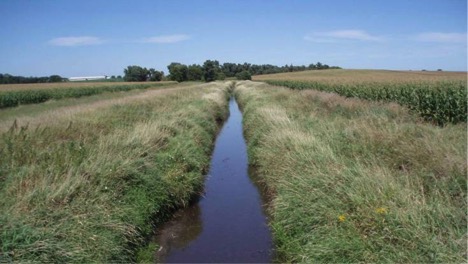Best Management
Practices
The Acetochlor Registration Partnership (Corteva Agriscience and Monsanto Company) worked with stakeholders to develop voluntary Best Management Practices (BMPs) for acetochlor to reduce the potential for the active substance and its breakdown products to be found in ground water and surface water, following application to agricultural fields.
In conjunction with general agricultural best management practices for herbicides, the following acetochlor-specific BMPs should be considered:
1. Adopt the core “BMPs for All Agricultural Herbicides” when applying acetochlor
As a baseline mitigation option, New York State Department of Environmental Conservation (NYSDEC) and Minnesota Department of Agriculture (MDA) provide a core set of best management practices that are suitable to mitigate pesticide losses and improve water quality.
2. Limit acetochlor applications to the lowest effective label rate
Acetochlor application rate can be lowered when used as a pre-plant/pre-emergence treatment in conjunction with a post emergence herbicide in a herbicide tolerant cropping system. In such cases acetochlor rates to achieve full season weed control are not required. It is important to follow product labels and check with your local crop consultant to ensure proper application rate for effective weed control, cost-savings and minimal impact to water resources.
3. Maintain application setbacks from surface water, tile inlets, wells and sinkholes
Application setbacks can effectively protect water resources, especially at points where runoff from a field enters a stream or river. When acetochlor is applied with atrazine, the atrazine label prohibits application within 50 feet of wells and sink holes, 200 feet from lakes and reservoirs, and 66 feet from where runoff enters streams and rivers.
4. Maintain vegetative filter strips between areas where acetochlor is applied and points where field runoff enters surface water, tile inlets, and sinkholes
Vegetative filter strip effectiveness increases with size. Landowners are encouraged to consult with Soil & Water Conservation District or National Resource Conservation Service staff for recommendations on vegetative filter strip width and design.
5. Adopt conservation tillage practices appropriate for farm’s topography and in karst areas
6. Use precision application methods

About Acetochlor
Acetochlor belongs to the group 15 “chloroacetamide” class of herbicides. Other herbicides in this class are S-metolachlor and dimethenamid. All chloroacetamide herbicides control weeds with the same mode of action (Long-chain Fatty Acid Inhibitor). The use of chloroacetamide herbicides should be considered in the development of a site-specific Integrated Weed Management (IWM) Plan.
Certain soils, regions and watersheds are more at risk to losses of acetochlor. Sensitive areas include those with highly permeable geologic material, highly erodible soils or seasonally high water tables (including areas with drain tiles). The ARP interactive map viewer can be used to determine whether or not restricted soils are present in your area.
Resources
- BMPs for All Agricultural Herbicides
- What’s Cropping Up? Blog: Acetochlor Herbicide Stewardship-New York State
- Minnesota Department of Agriculture: Water Quality BMPs for Agricultural Herbicides
- Product Stewardship for the Waters of New York
- Targeted Acetochlor Monitoring Programs
- de Guzman, N.P, P. Hendley, D.I. Gustafson, I. van Wesenbeeck, A.J. Klein, J.D. Fuhrman, K. Travis, N.D. Simmons, W.E. Teskey, and R.B. Durham. 2005. The acetochlor registration partnership state ground water monitoring program. J. Environ Qual. 2005 Apr 20;34(3):793-803. doi: 10.2134/jeq2003.0412
- Hackett, A.G., D.I. Gustafson, S.J. Moran, P. Hendley, I. van Wesenbeeck, N.D. Simmons, A.J. Klein, J.M. Kronenberg, J.D. Fuhrman, J.L. Honegger, J. Hanzas, D. Healy, and C.T. Stone. 2005. The acetochlor registration partnership surface water monitoring program for four corn herbicides. J. Environ Qual. 2005 Apr 20;34(3):877-89. doi: 10.2134/jeq2003.0411
- Newcombe, A.C., D.I. Gustafson, J.D. Fuhrman, I.J. van Wesenbeeck, N.D. Simmons, A.J. Klein, K.Z. Travis, and K.J. Harradine. 2005. The acetochlor registration partnership: prospective ground water monitoring program. J. Environ Qual. 2005 May 11;34(3):1004-15. doi: 10.2134/jeq2004.0428.


